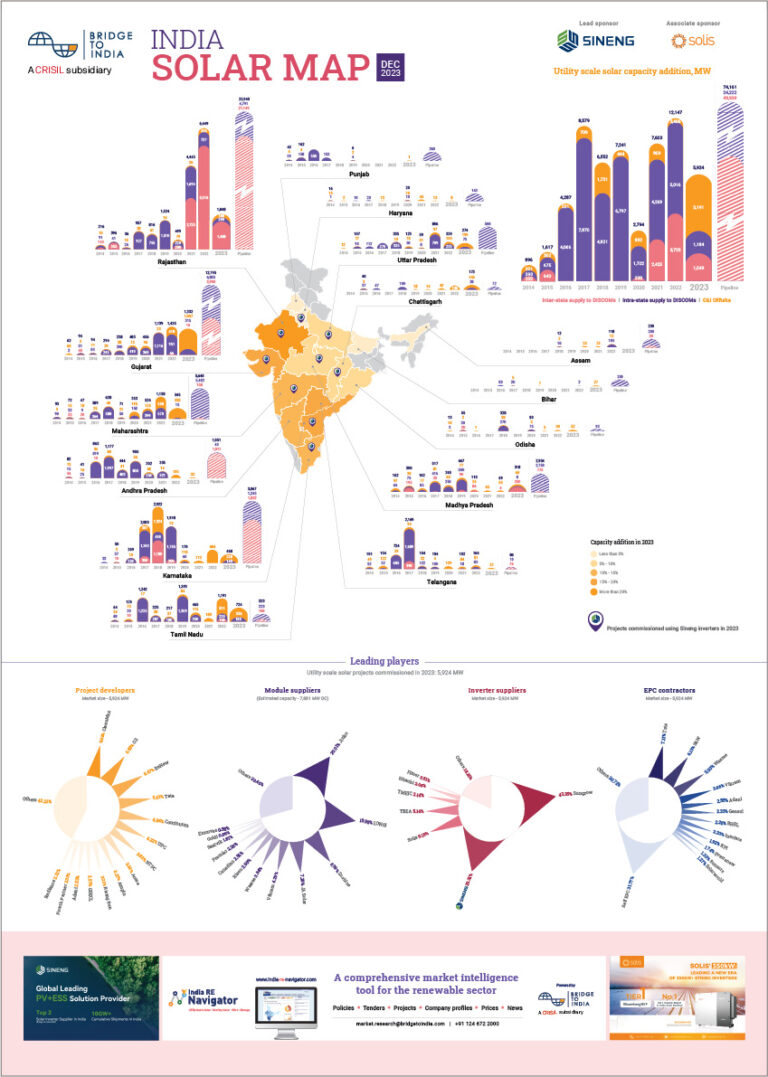As per news reports, SECI is seeking to invoke its legal rights in the tripartite agreement with Andhra Pradesh and the Reserve Bank of India to claim INR 276 million (USD 4 million) of outstanding amount from the state DISCOMs. If true, it is a dramatic and unimaginable escalation of conflict between the Centre and state. It is also an indicator of acute financial stress facing the state governments and DISCOMs.
- Like many other states, Andhra Pradesh is in a dire financial condition;
- Unable to receive government subsidy payments on time and raise tariffs, the DISCOMs are facing unprecedented financial stress;
- The situation risks getting out of control if the Centre and states can’t find a constructive long-term solution to keep DISCOMs bankable;
The developers have again approached the High Court appealing its decision to refer the matter to the state regulator. Meanwhile, all MNRE efforts to persuade Andhra Pradesh to honour the renewable PPAs have gone unheeded. We believe that the state government has boxed itself into a corner. Having originally adopted the politically naïve tactic of blaming previous state government, it is stuck into a legal stalemate. In truth, the state is in a dire financial condition and is simply unable to pay for power.
Figure: Timeline for Andhra Pradesh PPA renegotiation

Source: BRIDGE TO INDIA research
Many other states are facing increasing financial stress burdened by weak tax revenues and desire to offer giveaways to the public. Unable to receive subsidy payments on time and raise tariffs, the DISCOMs are facing unprecedented financial stress. Punjab is a glaring example where the government’s unpaid subsidy bills to the state DISCOM ballooned to INR 150 billion (over USD 2 billion) in 2019. The resultant deficit has meant that the DISCOM is unable to even pay its employees on time.
A recent report by Prayas, an energy sector NGO, on reliance of DISCOMs on state government subsidies (using a sample of six states including Gujarat, Haryana, Punjab, Tamil Nadu, Uttar Pradesh and Bihar) notes: “Subsidies to DISCOMs form 10-30% of the aggregate revenue requirement in various states. These subsidies are not limited to agriculture consumers alone as many domestic, non-domestic, and even industrial consumers receive free or subsidised power…. the quantum of subsidy is increasingly rapidly…. delays in subsidy payment are frequent and the time period of such delays is increasing. Delays in subsidy payments result in increased working capital borrowings for DISCOMs to meet operational expenses. This puts additional stress on cash-strapped DISCOMs.” The report concludes ominously that there is little transparency in subsidy data and that there are “significant discrepancies” in how this information is reported in regulatory documents.
The Indian government and MNRE have made all the right noises in recent months including tightening of bidding guidelines, mandating issuance of letters of credit by the DISCOMs and restricting unwarranted curtailment. But there is no material progress on the ground and no talk of long-term sustainable solutions including tariff rises and/ or efficiency improvements in T&D system.
The real risk here is that as the Andhra Pradesh saga rolls on, investors and lenders would lose patience posing grave threat to future prospects of RE.












